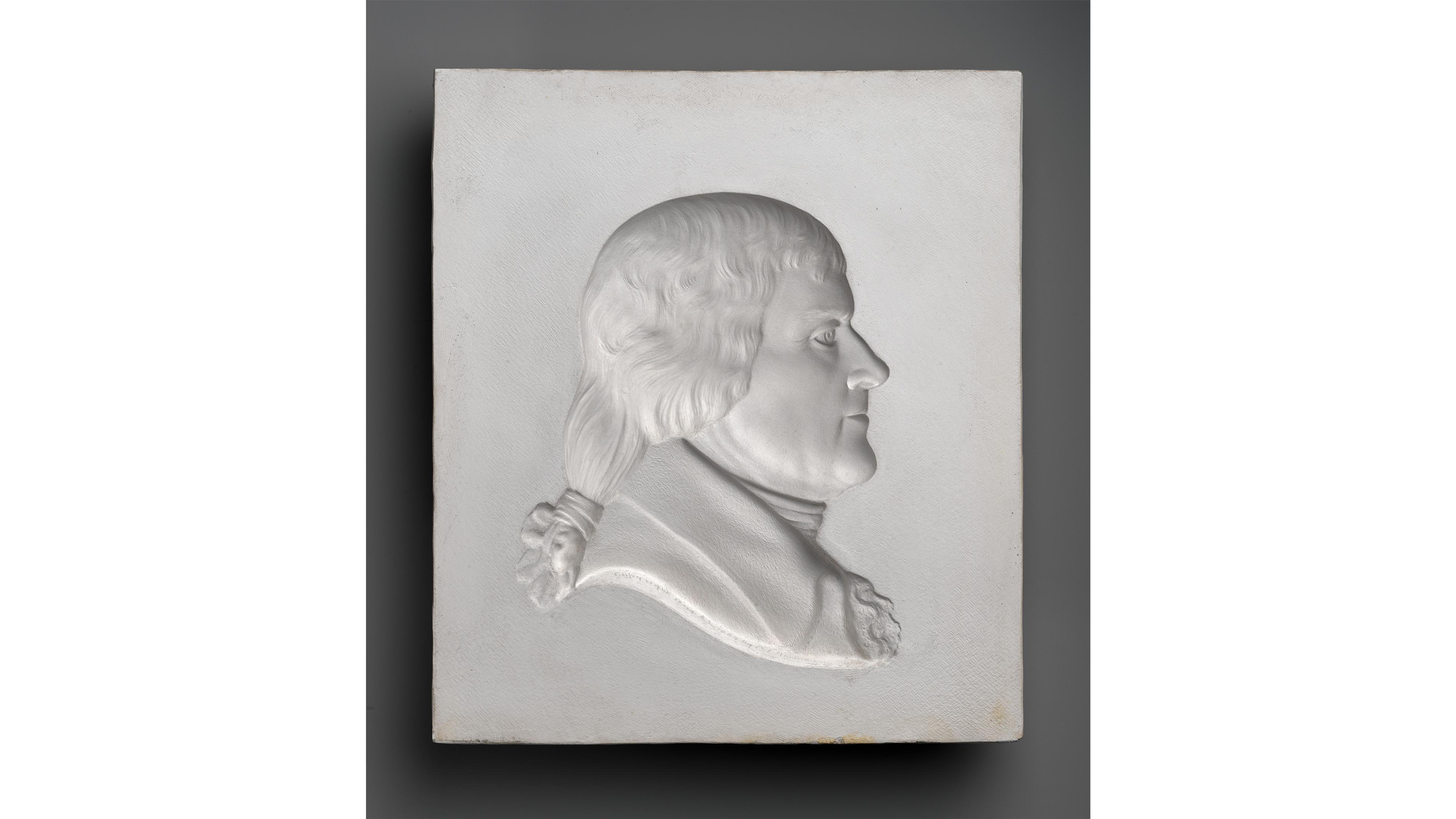语音指南

The American Wing at 100
Behind every artwork in the American Wing are often surprising stories of identity, time, and place. Hear historians, artists, poets, and community leaders from diverse backgrounds offer perspectives on various works.
Narrated by Danielle Parker
4001. Thomas Jefferson, Charles l. Hogeboom, (by 1884)
NARRATOR: Thomas Jefferson and Benjamin Franklin appear in these late nineteenth-century plaster reliefs as we are typically used to seeing them—as heroic figures.
Jane Kamensky, president and CEO of the Thomas Jefferson Foundation.
JANE KAMENSKY:We see in both the Franklin and the Jefferson images a kind of serenity. A serenity that almost resists life.These are figures beyond mortality.
NARRATOR: These sculptures suggest an America eager to reunite with a common, more harmonious origin story in the years after the Civil War. The Colonial Revival cultural phenomenon, which valued the founding narratives of the United States, was one such avenue to shared history and memory.
JANE KAMENSKY: I think the Colonial Revival Movement in arts, literature, the decorative arts, is part of an effort at national healing, in the wake of a civil war, and also an effort to tell a common American story in a period of massive social and demographic disruption.
The words that Jefferson wrote in the Declaration ofIndependence: We hold these truths to be self-evident, that all men, meaning all humanity, were created equal, these were words that women seeking suffrage embraced in the 19th-century, they were words that Frederick Douglass wrestled with, they were words that Gandhi took up, that have literally made their way around the globe. At the same time, Jefferson was an enslaver of hundreds of human beings; 600 or so over the course of his lifetime. So, there’s a tremendous contradiction baked into the history of this most brilliant and polymathic of American founders. That contradiction was known at the time was known especially by Jefferson, who knew that slavery was wrong. In our memorializations of the founders, we stopped wrestling with those contradictions and started remembering marble men, right?
An important thing to remember about America’s founders is that they did not view themselves as marble men. They viewed themselves as fallible human beings, as indeed they were.
- 4001. Thomas Jefferson, Charles l. Hogeboom, (by 1884)
- 4002. John Trumbull, George Washington and William Lee, 1780 | Now on view in Gallery 755
- 4003. Teapot, John Bartram (ca. 1765-69)
- 4004. Shoulder Belt for a Powder Horn (early 19th c.)
- 4005. Storage jar, Dave (David Drake) (1858)
- 4006. Tall clock with musical movement, Daniel Burnap (1790-95)
- 4007. Mr. and Mrs. Robert W. de Forest, Evelyn Beatrice Longman (1922)
- 4008. Niagara, Frederic Edwin Church (ca. 1858) | Not on view
- 4009. Face jug, unrecorded Edgefield district potter (ca. 1867-85)
- 4010. Paddle, Haudenosaunee (1850-75)
- 4011.Presentation Vases, Thomas Fletcher & Sidney Gardiner (1824 & 1825)
- 4012. Pagoda and case (ca. 1784-92)
- 4017. Watson and the Shark, John Singleton Copley (ca. 1788)
- 4018. Silver Medal of the U.S. Government [peace medal] (1793)
- 4019. Hiawatha and Minnehaha, Edmonia Lewis (1868)
- 4020. Billy Lee: Portrait in Tar, Titus Kaphar (2016)
- 4021. Study For Liberty Displaying the Arts and Sciences, or The Genius of America Encouraging the emancipation of Blacks, Samuel Jennings (ca. 1791-92)
- 4022. Attributed to Jacques Amans, Bélizaire and the Frey Children, ca. 1837
- 4023. Alexander Proctor, Buffalo, 1912
- 4024. Leslie Garland Bolling, Cooking on Saturday, 1936
- 4026. Thomas Cole, View from Mount Holyoke, Northampton, Massachusetts, after a Thunderstorm—The Oxbow, 1836
- 4027. Harriet Hosmer, Daphne, 1853
- 4028. Emanuel Leutze, Washington Crossing the Delaware, 1851
- 4029. Hiram Powers, California, 1850-55
- 4030. Julie Hart Beers, Ducks in the Woods, 1875
- 4031. Winslow Homer, Dressing for the Carnival, 1877
- 4032. John Quincy Adams Ward, The Freedman, 1863
- 4033. William Michael Harnett, Still Life-Violin and Music, 1888
- 4034. Fidelia Bridges, Still Life, 1870
- 4035. Grace Carpenter Hudson, Kodina, 1906
- 4036. Charles Ethan Porter, United (Cracked Watermelon), ca. 1890
- 4037. Winslow Homer, The Gulf Stream, 1899, Reworked by 1906
- 4038.Thomas Wilmer Dewing, La Pêche (Fishing), 1901-1904
- 4039. Edwin Austin Abbey, “King Lear,” Act 1, Scene 1, 1898
- 4040. Augustus Saint-Gaudens, Victory, 1892-1903
- 4041. Theresa Bernstein, Music Lovers, 1915